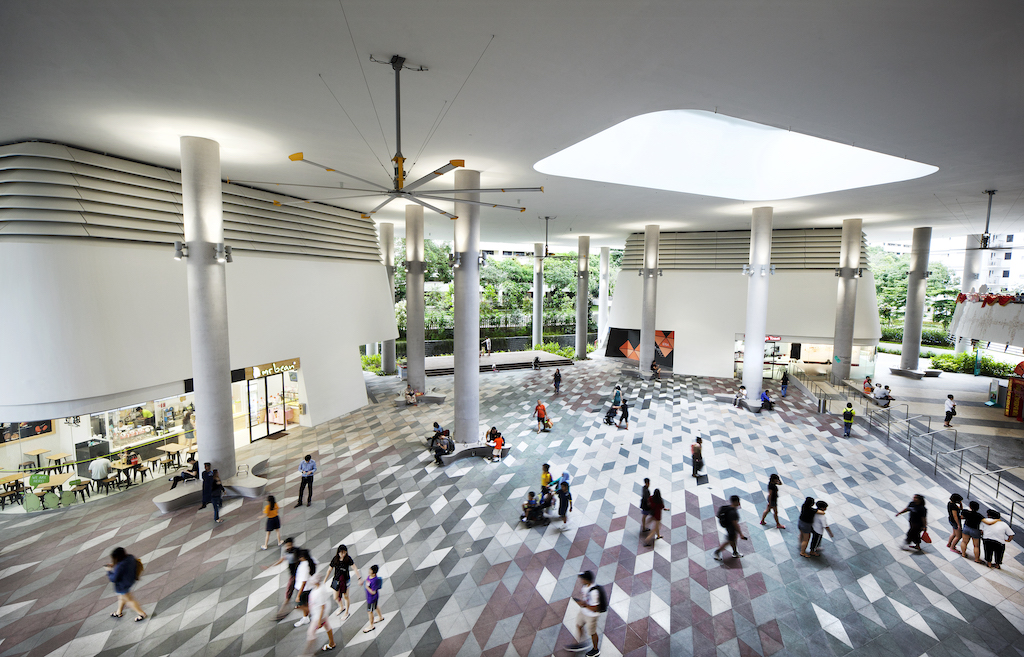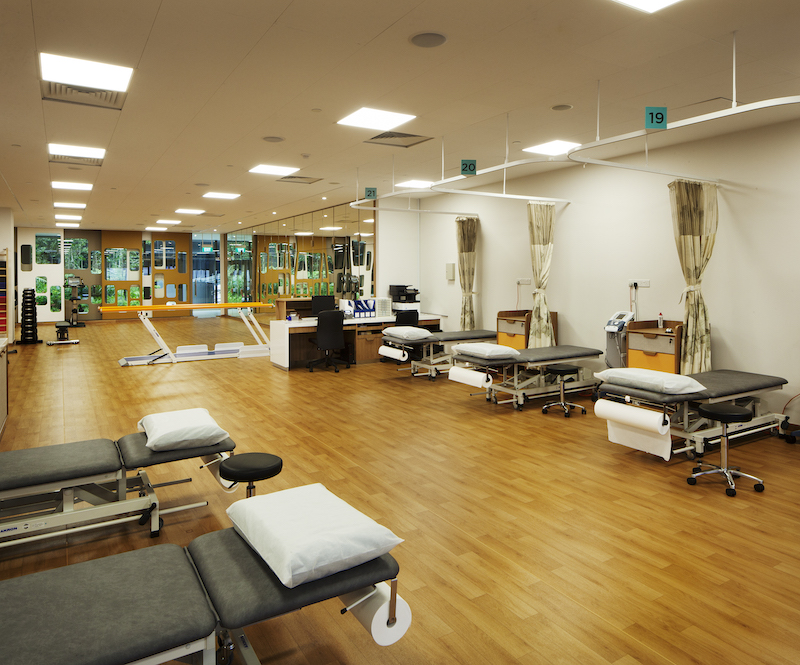Designing the first “retirement kampung”
Kampung Admiralty has been a success in its design bringing inclusivity and allowing its residents to live independent and active lives.

Kampung Admiralty.
The 11-storey development Kampung Admiralty has received a number of awards for its design, most recently the Design of the Year Award at this year’s President*s Design Award. The development is home to 104 flats for seniors, a medical centre, a senior care centre, a childcare centre and a 900-seat hawker centre. The flats are fitted with senior-friendly features including hand railings, a retractable clothes drying rack and induction hobs.
All levels of the development are imbued with greenery, and the biophilic design offers both visual relief and opportunities for residents to bond. The successful integration has enabled the seniors of Kampung Admiralty to lead independent and active lives. Ageless Online talks to Pearl Chee, director of WOHA Architects, about its project:
How do you build a kampung when a kampung doesn’t quite exist like in the past? What elements were important from the old kampung that were incorporated to the new kampung?
Our goal was to bring back the “kampung spirit” rather than a literal kampung in the form we knew growing up in Singapore. The spirit of gotong royong in meaning is “mutual assistance”, so our design focuses on building this community mindset within the development, but also across the neighbourhood, different ages, backgrounds etc.
Both the “hardware”, the built spaces, and the “software”, programmes in the Active Ageing Hub, community plaza, and other parts of the development, are important to allow the kampung spirit to thrive again. For example, the front entrances of the apartments have a “buddy bench” to allow neighbours to sit down, and interact with each other.
Plant species that were common in the old kampungs were chosen for the landscaping to give residents a point of reference and to allow them to share their memories and knowledge with others. The Active Ageing Hub has programmes like “Share a Dish” which encourages people to come together to prepare and enjoy a meal together on a regular basis. The “Community in Bloom” programme brings together volunteers from the neighbourhood to take care of the edible plants in rooftop urban farm.

Community plaza.
Can you share some unique features of this complex?
The building was completed in 2017 and officially opened by the Prime Minister in 2018. The site area is quite small (0.9 hectares) so the building is arranged vertically in layers, like a club sandwich, and integrates different services that cater to both the residents and the wider community. Kampung Admiralty houses a medical centre, childcare and senior care, a community plaza, hawker centre, retail and other F&B offerings, a rooftop park and urban farm, and of course, the apartments for the seniors. None of the individual amenities are unique, but the way they are integrated into one development and how they enable cross-programming and foster community and intergenerational bonding is very unique.
This is the first “retirement kampung” in Singapore and all of the 104 flats were snapped up. This complex is the first of 10 similar Housing Board build-to-order projects with childcare and elderly centres housed in the same area. Will you be working on those too?
Yes, Kampung Admiralty is a prototype for this type of development and its success and happy residents has prompted plans to replicate this model across the island. We are, however, not involved in any of the new projects.

One of the flats for seniors.
In looking back, if you could add a further improvement to this project, what would it be?
The mix of programmes in this project is very innovative and the first of its kind. I think instead of looking back, we should be looking to the future to see how this project can be replicated and/or adjusted to benefit more housing estates.
Why is design so crucial in this project in raising the quality of life for seniors?
Design can be used to create inclusive spaces and can find solutions, like the multi-layered programmes at Kampung Admiralty. Having a development that attracts and caters to people of all ages, seniors are motivated to be socially active and be part of the community outside their homes.

Medical centre.
What are some of the latest design trends that you noticed in designing spaces for seniors?
I wouldn’t say there are “trends” per se. Many places in the world are facing a demographic shift towards an ageing population, and so there naturally is an increased interest and even sense of urgency to find ways to design inclusive, life-affirming spaces that build community across generations and encourage active, healthy ageing. A lot of the solutions will also be rooted in cultural habits and traditions, so it’s hard to find a simple one-size-fits-all solution or to follow “trends”.

0 Comments